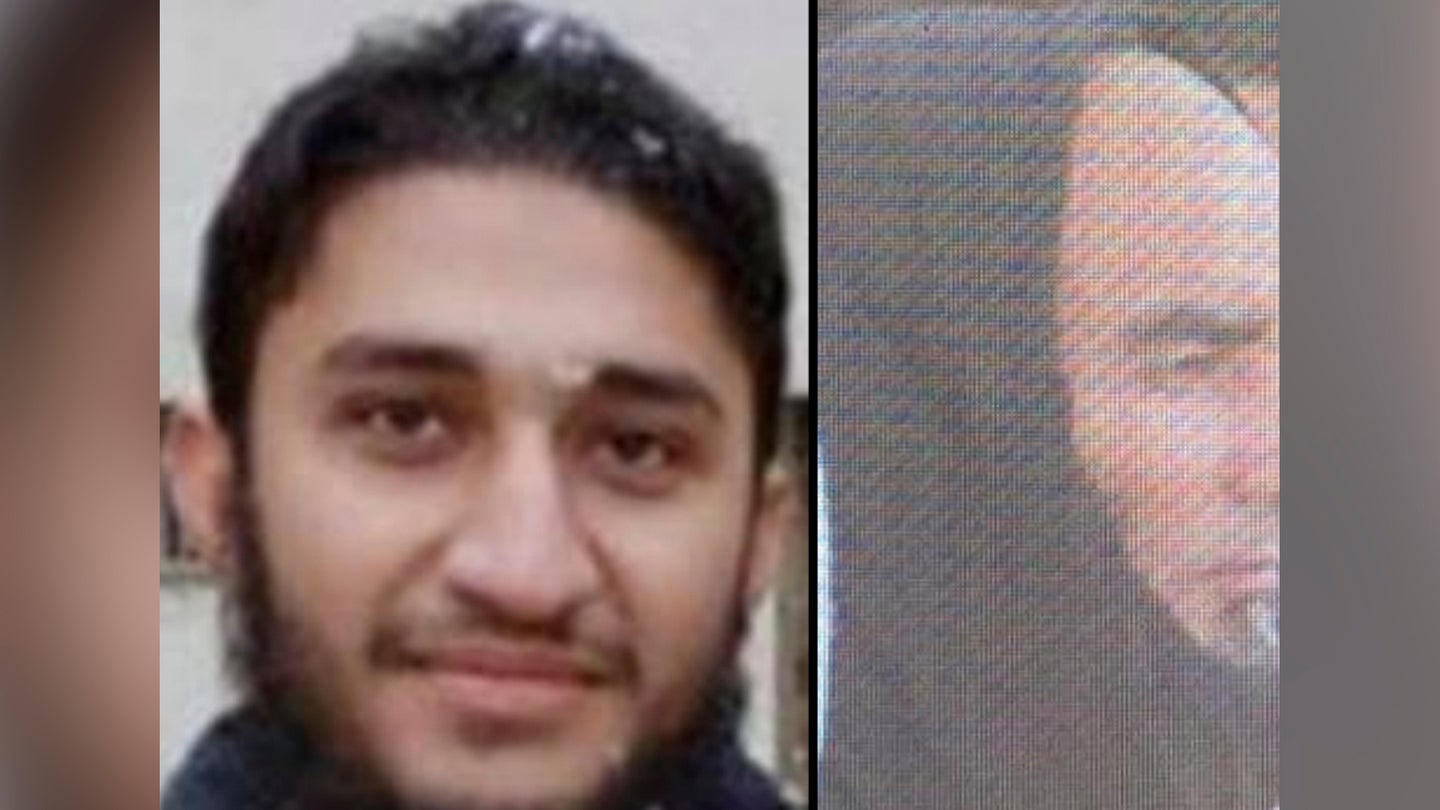Marine snipers did not spot Abbey Gate bomber before attack, officials say
The Aug. 26, 2021 attack at Abbey Gate killed 13 service members and 170 Afghans.

Addressing a widely circulated claim about the 2021 Abbey Gate bombing, a new investigation found that a man whom Marine Scout Snipers were denied permission to shoot was not the suicide bomber who killed 13 service members and 170 Afghans at Hamid Karzai International Airport.
“The suspicious individual observed by the snipers did not commit a hostile act or demonstrate hostile intent,” an Army official told reporters on Friday. “Additionally, the offensive engagement authority was not warranted. In short, there was no opportunity to engage the bomber prior to the attack.”
The Taliban launched a lightning offensive in the summer of 2021 that culminated with their capture of Kabul on Aug. 15. For the next two weeks, U.S. troops held a tenuous line on the airport’s perimeter, buying time, space and relative safety for evacuation flights of thousands of desperate people from Hamid Karzai International Airport.
The new investigation, released Monday, is the second review of the tactical situation that U.S. troops faced at HKIA. An initial investigation of the attack and the operation found that U.S. troops guarding Abbey Gate were in an undefendable position. A Marine general officer wanted to close the gate on the day before the suicide bomber struck, that initial investigation found. Overall, that investigation concluded that the attack was not preventable,
In the years since, veterans of HKIA and supporters have pushed stories and testimony they say were overlooked in the first investigation and that, in some cases, suggest the attack could have been avoided. Marine Sgt. Tyler Vargas-Andrews told lawmakers last year that Scout Snipers had spotted a man at Abbey Gate who matched warnings that the defenders had received of how suicide bomber might look on the day of the attack.
Subscribe to Task & Purpose today. Get the latest military news and culture in your inbox daily.
Vargas-Andrews said the Scout Snipers were repeatedly denied permission to shoot the man before he disappeared.
“Plain and simple: We were ignored,” Vargas-Andrews testified before Congress in March 2023. “Our expertise was disregarded. No one was held accountable for our safety.”

Based in part on Varas-Andrews’ testimony, U.S. Central Command announced in September that Army and Marine Corps officials would conduct a supplemental investigation to see if any new evidence might change the findings of the original investigation.
The investigation found that the man the Scout Snipers spotted seven hours before the attack was not the suicide bomber, Army and Marine Corps members of the supplemental review team told reporters on Friday, the day before that the Pentagon began notifying families of those killed at Abbey Gate of the investigation’s results.
U.S. intelligence agencies have identified the actual suicide bomber as Abdul Rahman al-Logari, a member of ISIS-Khorasan since 2016, Army officials said. He had been in coalition custody but was freed by the Taliban when it overran Afghan prisons in August 2021.
Intelligence indicates that al-Logari arrived at Abbey Gate shortly before he detonated his suicide bomb, reducing the chance that he would be spotted before the attack, Army officials said.
In the days leading up to the attack, U.S. troops received 33 reports about possible attacks on Hamid Karzai International Airport, but they were given vague descriptions of what a suspected suicide bomber looked like, a Marine Corps official said on Friday.
“When we spoke to service members two years ago about threat streams – this would have been just five or six weeks post-attack – most could recall hearing about a gold [Toyota] Corolla possibly used as a vehicle-borne IED [improvised explosive device],” the Marine Corps official said. “Some can recall being on the lookout for a black backpack. That’s it. That’s how ambiguous reporting was at the lowest level.”
By Aug. 26, U.S. troops were given the following description of what a suspected suicide bomber looked like: A man with groomed hair, wearing loose clothes and carrying a black bag of explosives, the Marine Corps official said. At any given time, several people in the crowd outside the airport fit that description.
Around 7 a.m. that day, a U.S. Army psychological operations team notified the Scout Snipers about a suspicious person dubbed by the review team as the “bald man in black,” whom the team thought matched the description of the suspected suicide bomber in previous warnings, the Marine Corps official said.
But a facial comparison of the bald man in black and al-Logari revealed they were not the same person, an Army official said. The U.S. intelligence community has photos of al-Logari from when he was in coalition custody, an Army official said.
The supplemental investigation also determined that military commanders had made the correct decision in not allowing the Scout Snipers to shoot the bald man in black because he did not have a weapon or showing hostile intent and there were no indications that he was carrying a bomb, another Army official said.
The Scout Snipers’ battalion commander rightly assessed that the bald man in black was not a lawful target, and he followed the rules of engagement correctly, the Army official said.
The supplemental investigation also underscored the initial investigation’s findings that the Abbey Gate attack was not preventable.
“ISIS-K would still have been able and capable of conducting the attack because they had multiple bombers that were available,” an Army official said.
The latest on Task & Purpose
- Former Army base warns of grenades on local trails
- ‘Black Hawk Down’ Ranger veteran awarded Silver Star
- The Air Force’s new $60 million Special Warfare center honors a fallen pararescueman
- Former Air National Guardsman may have defected to Russia
- Marine battalion commander fired for “loss of trust and confidence”
